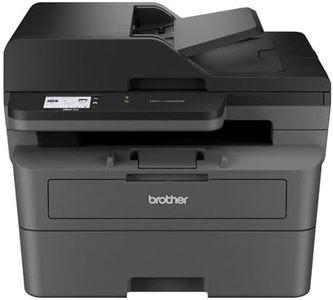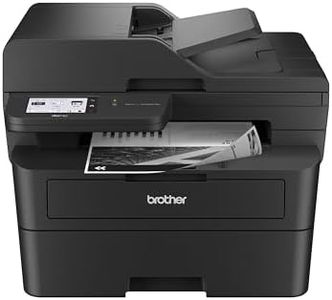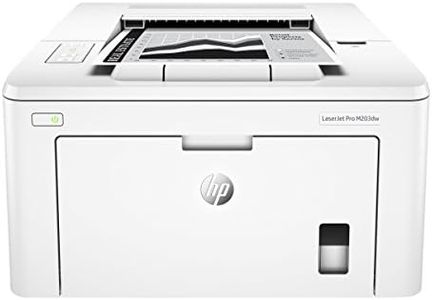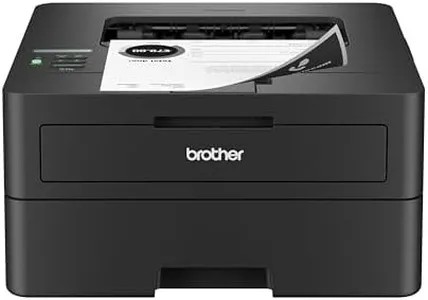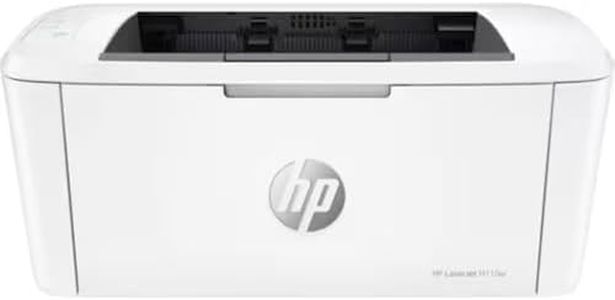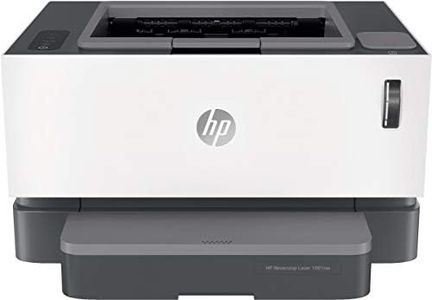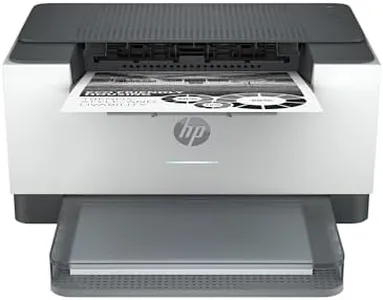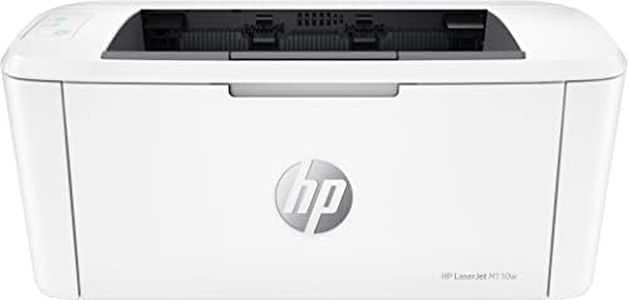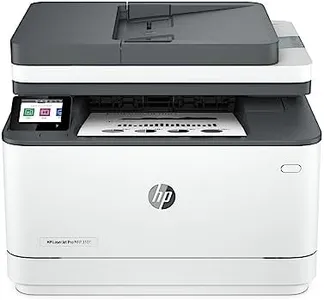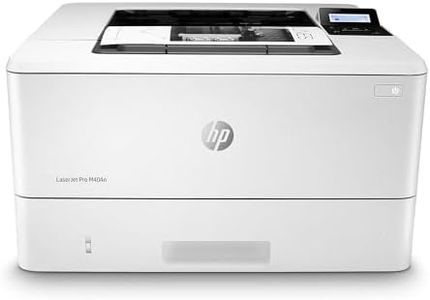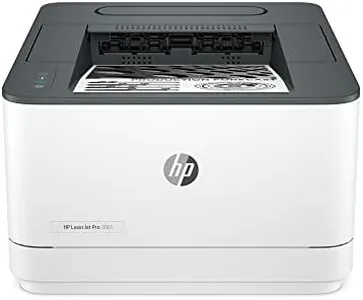We Use CookiesWe use cookies to enhance the security, performance,
functionality and for analytical and promotional activities. By continuing to browse this site you
are agreeing to our privacy policy
10 Best Black And White Laser Printer
From leading brands and best sellers available on the web.By clicking on a link to a third party's website, log data is shared with that third party.
Buying Guide for the Best Black And White Laser Printer
Choosing a black-and-white laser printer can seem overwhelming with all the features and specs available. The best way to approach this is to think about your typical use: how often you print, what kinds of documents you need, and what features matter most to you—like speed, quality, and connectivity. By focusing on the key specifications and understanding what each one means for your day-to-day usage, you can make a choice that suits your needs and avoids unnecessary extras.Print Speed (Pages Per Minute - PPM)Print speed measures how many pages a printer can produce in one minute. This spec is important if you often print large documents or need quick turnaround times. Printers typically fall into three ranges: around 20-25 ppm for occasional home or small office use, 26-40 ppm for regular office work with mid-volume needs, and 40+ ppm for high-demand environments like busy offices. Assess how often you print big batches—if it's rare, lower speeds are fine, but if fast printing is a regular need, a higher speed model is worth considering.
Print Resolution (DPI - Dots Per Inch)Print resolution refers to the level of detail a printer can produce, measured in dots per inch (DPI). High DPI (1200 x 1200 or more) means crisper, sharper text and better image details, though for most text documents, even a basic resolution like 600 x 600 DPI is sufficient. If you mainly print text, don't be swayed by super high resolutions—these matter more when small graphics or fine details are essential.
Duty CycleDuty cycle tells you how many pages a printer is designed to handle per month without wearing out. Lower duty cycles (up to 5,000 pages/month) suit occasional or home use, mid range (5,000-20,000) is good for frequent office use, and higher numbers are for very busy workgroups. To pick the right one, think about your average monthly print volume and choose a printer with a duty cycle well above that to ensure longevity and reliability.
ConnectivityConnectivity indicates how your devices can connect to the printer, such as via USB, Ethernet, Wi-Fi, or even mobile printing options. USB is simplest and best for single computers, Ethernet suits shared office environments, while Wi-Fi and mobile printing are ideal for flexible, multi-device households or offices. Pick based on how many people need access and where you want the printer placed relative to your devices.
Paper HandlingPaper handling covers the types and amount of paper the printer can manage. This includes input tray capacity, support for different paper sizes, and automatic duplexing (double-sided printing). Smaller trays (around 150 sheets) are fine for light use, while offices may need 250+ sheet trays. If you often print long documents or want less time refilling paper, larger trays and duplexing matter most. Also, check if you need to print on special media like envelopes or labels.
Operating Costs (Toner Yield and Maintenance)Operating costs are determined by the price and lifespan of toner cartridges and any regular maintenance parts. High-yield toner cartridges may cost more upfront but allow you to print more pages and replace cartridges less often. Standard yield is usually fine for infrequent printing, while frequent users benefit from high-yield options. Estimate your ongoing costs by looking at the toner cartridge yield (how many pages it lasts) to avoid surprises.
Size and Noise LevelSize matters if your space is limited—a compact model fits on a desk while larger printers might need their own space. Noise level can be an important factor for home offices or quiet environments; quieter models are better for close-up workspaces. Always consider where you plan to put the printer and how much noise is acceptable during operation.
